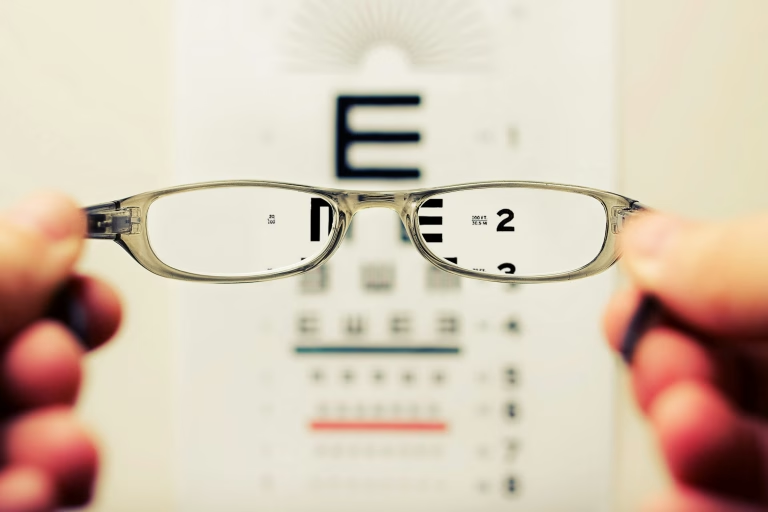Eye Exam Frequency Guide: Age & Health Recommendations
Over 75 percent of visual impairments can be prevented or treated when detected early through regular eye exams, making professional screenings indispensable for preserving sight. This article details exactly how often you should visit an eye doctor across life stages and health conditions, ensuring you follow best practices for pediatric vision development, adult maintenance, senior care, risk-factor monitoring, the benefits of routine screenings, what happens during a comprehensive eye exam, and urgent warning signs requiring immediate attention. By mapping age-based schedules, condition-specific intervals, and procedural insights, you’ll have a clear plan for safeguarding your eye health at every stage. Book an exam today! Contact Advanced Eye Care: Schedule Your Appointment Now.
How Often Should Children Get an Eye Exam?
Pediatric eye exams encompass vision screening and binocular coordination tests, following American Academy of Pediatrics and American Optometric Association guidelines to identify refractive errors, amblyopia, and developmental issues. Early screenings detect conditions like strabismus before they become permanent, enhancing visual outcomes through timely intervention.
Outlined below is the recommended schedule for pediatric eye screenings across early developmental stages.
| Age Group | Recommended Interval | Purpose |
|---|---|---|
| Infants (6 months) | First comprehensive exam | Screen for congenital issues |
| Toddlers (3 years) | Follow-up examination | Detect amblyopia and refractive errors |
| Preschool (5–6 years) | Vision screening | Assess acuity before school entry |
| School-Age (6–18 years) | Annual exam | Monitor prescription changes and binocular vision |
These intervals form the baseline for safeguarding children’s visual milestones, leading us to specific guidelines for infants under six months.
When Should Infants Have Their First Eye Exam?
The first eye exam for infants, typically at six months, evaluates ocular alignment and fixation to detect congenital cataracts or strabismus. Early screening improves depth perception development and prevents vision loss, as illustrated by newborn screenings that identify risk factors like family history of glaucoma. Understanding this initial exam sets the stage for school-age recommendations.
What Is the Recommended Eye Exam Frequency for School-Age Children and Teens?
School-age children and teens benefit from annual comprehensive eye exams to monitor refractive changes during growth spurts and screen for stereoacuity deficits. These evaluations by an optometrist detect myopia progression and astigmatism shifts, ensuring timely prescription updates and supporting academic performance. Consistent annual visits maintain visual comfort and reduce learning challenges caused by uncorrected vision.
Why Are Regular Eye Exams Crucial for Children’s Vision Development?
Regular pediatric screenings improve early detection of amblyopia, strabismus, and refractive errors, directly enhancing reading skills and classroom engagement. They also allow eye doctors to recommend protective measures—such as blue-light filtering lenses—to support developing retinas. By catching issues before symptoms arise, guardians can follow corrective therapies that optimize visual development and prevent long-term impairment.
Pediatric Eye Exam Guidelines
Regular eye exams for children are crucial for early detection of vision problems like amblyopia and strabismus, which can significantly impact reading skills and classroom engagement. Early intervention through corrective therapies can optimize visual development and prevent long-term impairment.
American Academy of Pediatrics, “Vision Screening and Eye Examinations in Infants, Children, and Young Adults” (2017)
This guideline supports the importance of early and regular eye exams for children to ensure proper vision development and address potential issues promptly.
How Often Should Adults Schedule an Eye Exam?
Adult eye exams combine refractive assessments, intraocular pressure measurements, and retina evaluations to maintain vision clarity and detect ocular disease. Routine exams by an optometrist or ophthalmologist improve early identification of glaucoma, diabetic retinopathy, and age-related macular degeneration, supporting overall eye health and quality of life.
Outlined below are general guidelines for adults, segmented by age group.
| Age Range | Recommended Interval | Focus |
|---|---|---|
| 18–64 years | Every 2 years | Refractive error monitoring; baseline screenings |
| 65 years+ | Annual exam | Glaucoma pressure checks; macular health |
These recommendations establish a baseline for adults without risk factors before addressing individual conditions and contact lens wear.
What Are the General Eye Exam Recommendations for Adults Aged 18-64?
Adults aged 18–64 should have a comprehensive eye exam at least every two years, or annually if experiencing vision changes. These exams include visual acuity tests, slit-lamp evaluations, and tonometry to detect glaucoma and cataract development early. Adhering to this schedule promotes sustained visual performance and facilitates timely prescription adjustments.
Adult Eye Exam Recommendations
Adults aged 18-64 should have a comprehensive eye exam at least every two years, or annually if experiencing vision changes. These exams help in the early detection of conditions like glaucoma and cataracts, promoting sustained visual performance and timely prescription adjustments.
American Optometric Association, “Comprehensive Eye and Vision Examination” (2024)
This source provides the recommended frequency for eye exams in adults, which aligns with the article’s guidelines for maintaining eye health.
When Should Adults With Risk Factors Get More Frequent Eye Exams?
Adults with diabetes, a family history of glaucoma, or prior eye surgery should schedule exams annually or more often, as these risk factors accelerate disease progression. For example, diabetics need a dilated retinal exam every 6–12 months to screen for diabetic retinopathy, while glaucoma suspects benefit from pressure checks every 6–9 months. Proactive monitoring by an eye doctor reduces the likelihood of irreversible vision loss.
How Often Should Adults Who Wear Contact Lenses Have Eye Exams?
Contact lens wearers should undergo an annual contact lens exam in addition to routine vision screenings. These appointments assess corneal health, tear film quality, and lens fit, preventing complications like keratitis or corneal ulcers. Regular evaluations support safe lens wear and maintain ocular surface integrity.
How Often Should Seniors Get an Eye Exam?
Seniors face increased risk of cataracts, macular degeneration, and glaucoma, making annual comprehensive eye exams essential for preserving independence and quality of life. Exams by an optometrist or ophthalmologist enhance early detection and allow prompt management of age-related conditions.
What Is the Recommended Eye Exam Schedule for Adults 65 and Older?
Individuals 65 and older should have an eye exam every year to monitor intraocular pressure, lens opacity, and retinal health. These annual screenings optimize cataract detection and macular evaluations, ensuring timely treatment options—such as cataract surgery or macular degeneration therapies—are available.
Which Age-Related Eye Conditions Make Regular Exams Essential for Seniors?
Cataracts, glaucoma, and age-related macular degeneration increase dramatically after 65, and routine exams detect subtle changes in lens clarity, optic nerve health, and retinal pigment. By identifying these conditions early, seniors can benefit from vision-preserving interventions that maintain mobility and reduce fall risk.
How Do Eye Exams Help Prevent Vision Loss in Seniors?
Comprehensive screenings reveal early glaucoma signs through tonometry and optic nerve imaging, enabling pressure-lowering treatments before irreversible damage occurs. They also track macular changes, leading to nutritional or pharmaceutical interventions that slow degeneration. Preventive care supports sustained visual independence and daily functioning.
How Often Should People With Specific Health Conditions Get Eye Exams?
Certain systemic conditions directly affect eye structures, requiring tailored exam intervals to mitigate sight-threatening complications. Specialists recommend more frequent assessments for these at-risk groups.
Outlined below are condition-based exam frequencies.
| Condition | Exam Type | Recommended Frequency |
|---|---|---|
| Diabetes | Comprehensive dilated exam | Every 6–12 months |
| Glaucoma risk or diagnosis | Pressure and nerve imaging | Every 6–12 months |
| High blood pressure or family history | Full ocular evaluation | Annual or as directed |
How Often Do Diabetics Need Comprehensive Dilated Eye Exams?
Diabetic patients should have a dilated eye exam at least once a year, with more frequent visits if retinopathy is present. Dilation enables detailed inspection of retinal vessels and early detection of microaneurysms, reducing the risk of vision-threatening complications through timely laser or medical therapy.
What Is the Recommended Eye Exam Frequency for Glaucoma Risk or Patients?
Individuals with glaucoma risk factors or established disease require pressure checks and optic nerve assessments every 6–12 months. Regular tonometry and optic coherence tomography (OCT) detect nerve fiber layer thinning, guiding intraocular pressure management to prevent progressive vision loss.
How Often Should Individuals With High Blood Pressure or Family History of Eye Disease Get Exams?
People with hypertension or a family history of eye disease benefit from annual comprehensive exams, as these factors elevate the risk of retinal vascular changes and glaucoma. Early identification of hypertensive retinopathy or optic nerve susceptibility allows targeted interventions to protect vision.
Why Are Regular Eye Exams Important for Overall Eye and Health?
Routine eye exams uncover early signs of ocular diseases and reveal systemic health conditions, making them a critical component of preventive healthcare. By examining the retina and optic nerve, eye doctors can detect both eye-specific and general medical issues before symptoms emerge.
How Do Eye Exams Detect Early Signs of Eye Diseases Like Cataracts and Macular Degeneration?
Through slit-lamp evaluations and dilated fundus exams, practitioners identify lens opacities and drusen deposits on the macula. Early recognition of these changes allows patients to consider lifestyle modifications and medical therapies that slow progression and preserve functional vision.
What Systemic Health Conditions Can Eye Exams Reveal?
Comprehensive retinal examinations can expose signs of hypertension, diabetes, high cholesterol, and even brain tumors by visualizing vessel integrity and optic disc appearance. Detecting these systemic indicators during routine eye care facilitates timely referral for medical management and holistic health support.
How Do Regular Eye Exams Prevent Vision Loss and Improve Quality of Life?
By enabling early intervention for glaucoma, diabetic retinopathy, and macular degeneration, periodic screenings reduce the incidence of irreversible blindness. Maintaining clear vision through preventive screenings enhances daily functioning, safety, and overall well-being.
What Happens During a Comprehensive Eye Exam?
A comprehensive eye exam is a diagnostic procedure combining multiple tests to evaluate visual acuity, ocular health, and refractive status. These assessments support accurate prescriptions and disease detection, forming the cornerstone of preventive eye care.
What Tests and Tools Are Used in a Comprehensive Eye Exam?
A typical exam includes:
- Visual Acuity Test to measure clarity of sight at various distances.
- Tonometry to assess intraocular pressure.
- Slit-Lamp Examination for detailed evaluation of the cornea, lens, and anterior chamber.
- Retinal Imaging or Dilation to inspect the retina and optic nerve head.
These measurements provide a holistic view of ocular health and guide any necessary treatments or referrals.
How Does a Dilated Eye Exam Differ From a Standard Eye Test?
Dilation involves using eye drops to widen the pupil, allowing the eye doctor to examine the entire retina and optic nerve. This contrasts with standard tests that focus on visual acuity and anterior structures, extending the scope of disease detection and enabling earlier interventions.
What Should Patients Expect During Their Eye Exam Appointment?
Patients should plan for a 45–60 minute visit, including dilation and discussion of results. They may experience light sensitivity and blurred near vision for a few hours post-dilation. Bringing sunglasses and arranging transportation can enhance comfort and convenience.
When Should You See an Eye Doctor Immediately?
Sudden or severe symptoms often signal acute ocular conditions requiring prompt professional care. Recognizing these warning signs and visiting an eye doctor without delay can prevent permanent damage.
What Sudden Vision Changes Require Immediate Eye Care?
Blurred vision, partial vision loss, or visual field defects (such as a shadow or curtain over vision) demand urgent evaluation to rule out retinal detachment, stroke, or optic neuritis. Rapid assessment and treatment can preserve sight and overall health.
Which Eye Pain or Discomfort Symptoms Are Warning Signs?
Severe eye pain, redness, and light sensitivity—especially when accompanied by headache—may indicate acute glaucoma, corneal ulcer, or uveitis. Early intervention by an ophthalmologist is essential to prevent complications and relieve discomfort.
Why Are Flashes and Floaters a Reason to Seek Urgent Eye Evaluation?
New onset of flashes or a sudden increase in floaters can signal retinal tears or detachments. Immediate examination with dilated fundoscopy and ultrasound ensures prompt surgical repair, significantly reducing the risk of permanent vision loss.
Regular eye exams form the foundation of preventive eye care at every stage of life, from infancy through senior years. By adhering to age-based guidelines and condition-specific intervals, you support vision preservation and early disease detection. Comprehensive screenings by an optometrist or ophthalmologist reveal both ocular and systemic health issues, empowering you to take proactive steps for long-term wellness. Schedule your next visit with an eye doctor today to protect your eyesight and overall health.







